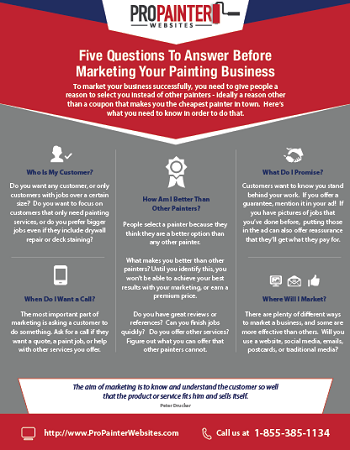Discover Just How Seasonal Variables Influence Industrial Exterior Painting Success And Discover The Most Effective Times To Make Sure Lasting Results For Your Task
Discover Just How Seasonal Variables Influence Industrial Exterior Painting Success And Discover The Most Effective Times To Make Sure Lasting Results For Your Task
Blog Article
Material By-Carlson Whalen
When you're preparing a commercial exterior paint task, seasonal variables can make or damage your results. You'll wish to take into consideration how temperature and moisture effect paint application and drying times. Picking the right season can guarantee your paint adheres appropriately and lasts longer. Yet which periods are absolutely the best for this kind of job? Let's check out the key elements that can influence your job's success.
The Impact of Temperature Level on Paint Application
When you're planning a business external paint task, the temperature level can dramatically affect how well the paint sticks and dries.
Preferably, you wish to paint when temperatures range between 50 ° F and 85 ° F. If it's also chilly, the paint might not heal effectively, causing issues like peeling off or fracturing.
On the other hand, if it's too hot, the paint can dry as well promptly, preventing correct adhesion and leading to an irregular coating.
You must additionally take into consideration the moment of day; early morning or late afternoon uses cooler temperatures, which can be more desirable.
Always inspect the supplier's suggestions for the details paint you're using, as they commonly offer support on the excellent temperature variety for ideal results.
Humidity and Its Result on Drying Times
Temperature isn't the only environmental element that influences your commercial outside painting task; moisture plays a significant role as well. building painting services can slow down drying out times drastically, impacting the overall top quality of your paint job.
When the air is saturated with moisture, the paint takes longer to cure, which can lead to problems like inadequate attachment and a higher threat of mildew growth. If manufacturing facility painting on an especially damp day, be planned for extended wait times between layers.
It's important to check local climate condition and strategy appropriately. Ideally, go for moisture levels in between 40% and 70% for ideal drying.
Maintaining these consider mind ensures your task remains on track and supplies a long lasting finish.
Best Seasons for Commercial Exterior Paint Projects
What's the most effective time of year for your industrial external paint jobs?
Springtime and early fall are typically your best bets. During these seasons, temperatures are mild, and moisture levels are often reduced, producing excellent conditions for paint application and drying out.
Prevent summer's intense heat, which can cause paint to dry also quickly, bring about poor adhesion and coating. In a similar way, wintertime's chilly temperature levels can hinder proper drying and treating, risking the durability of your paint job.
Aim for days with temperatures in between 50 ° F and 85 ° F for optimum outcomes. Bear in mind to check the local weather prediction for rainfall, as wet problems can ruin your project.
Planning around these aspects guarantees your paint task runs efficiently and lasts much longer.
Verdict
To conclude, preparing your business exterior paint tasks around seasonal considerations can make a substantial difference in the result. By scheduling work throughout the perfect temperature levels and moisture degrees, you'll guarantee better adhesion and drying out times. Keep in mind to keep an eye on local weather forecasts and choose the right time of year-- spring and early fall are your best choices. Taking these actions will aid you attain a sturdy and expert finish that lasts.
